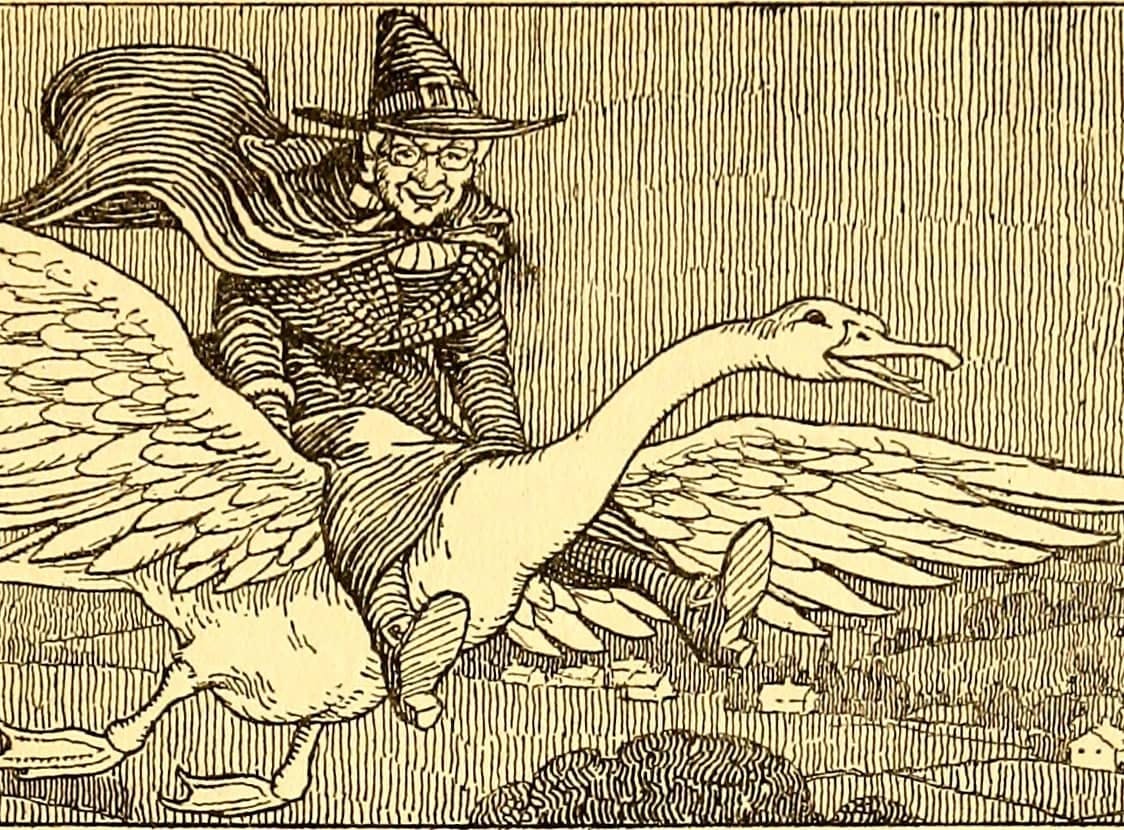Poem of the Day: ‘Sing a Song of Sixpence’
Rhythmically fascinating, the poem is in a tricky ballad meter — a children’s chant that alternates lines of four and three beats, with most of the four-foot lines gaining their fourth beat by putting a stress on the last syllable.

In 1926, Archibald MacLeish (1892–1982) published a poem he called “Ars Poetica” (an updating, he thought, of Horace’s ancient Roman “art of poetry”). Composing a manifesto for the Imagism of the time, MacLeish concludes the poem with his triumphant and once-famous declaration: “A poem should not mean / But be.”
And there you have it. The Imagists did not always manage to abide by the creed; meaning is a stealthy thing that prowls the edges, always seeking a crack through which to creep back in. But in its purity, if we want to see poems not mean but be, the best place to go may be Mother Goose. Or any nonsense poem, really. After all, if the goal is not meaning, poems designed not to mean are by definition the works that put their rhyme and meter above their sense — aiming at the triumph of the ontological over the epistemological.
A year and a half ago, we published a Mother Goose rhyme as Poem of the Day here in The New York Sun: “There Was an Old Woman Tossed Up in a Blanket.” And as we noted at the time, the name “Mother Goose” seems to have entered English from French fairy tales. Yet once John Newbery’s press published “Mother Goose’s Melody, or, Sonnets for the Cradle” (probably in the early 1780s), her name became forever associated in English with traditional children’s verse — that strange and wonderful body of old, anonymous counting rhymes, rhythmic folklore, nonsense verse, and political chants that had lost their meaning.
Among the old rhymes that would make their way into the ever-expanding collection of Newbery’s “Mother Goose,” one of the best known is “Sing a Song of Sixpence”: “Wasn’t that a dainty dish / To set before the king?” You’ll sometimes see a suggestion that the rhymes’ blackbirds are a reference to Henry VIII’s destruction of the monasteries. And that Anne Boleyn is the maid who gets her nose clipped off. Or that the 24 blackbirds are the hours in a day, with the king the sun and the queen the moon. The Snopes website once ran a parody that claimed the poem was a code for pirates — and then had to spend time explaining the parody to people who believed it.
The truth is that the poem doesn’t mean any of all that. It probably never meant anything, but it certainly hasn’t meant anything since the 18th century. “Sing a Song of Sixpence” just is. Rhythmically fascinating, the poem is in a tricky ballad meter — a children’s chant that alternates lines of four and three beats, with most of the four-foot lines gaining their fourth beat by putting a stress on the last syllable: “Síng a sóng of síx-pénce . . . Fóur and twénty bláck-bírds,” etc. And why not? For one of the lighter verses we offer here in the Sun on Wednesdays, “Sing a Song of Sixpence” is its own excuse for being.
Sing a Song of Sixpence
by Mother Goose
Sing a song of sixpence,
A pocket full of rye,
Four and twenty blackbirds
Baked in a pie.
When the pie was opened
The birds began to sing—
Wasn’t that a dainty dish
To set before the king?
The king was in the counting-house
Counting out his money,
The queen was in the parlor
Eating bread and honey,
The maid was in the garden
Hanging out the clothes.
Along came a blackbird
And snipped off her nose.
___________________________________________
With “Poem of the Day,” The New York Sun offers a daily portion of verse selected by Joseph Bottum with the help of the North Carolina poet Sally Thomas, the Sun’s associate poetry editor. Tied to the day, or the season, or just individual taste, the poems are drawn from the deep traditions of English verse: the great work of the past and the living poets who keep those traditions alive. The goal is always to show that poetry can still serve as a delight to the ear, an instruction to the mind, and a tonic for the soul.
